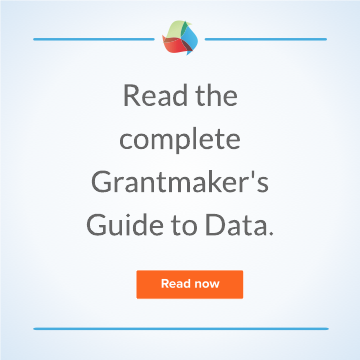
The world is a complex place. No one knows this better than the people who make it their mission to help solve today’s most urgent problems.
Increasingly, foundations and other grantmakers are turning to the power of data – and technology that makes access to that data possible – to help navigate the complexities of making change in a hyper-connected, interdependent world.
But what exactly is grantmaking data and why is it important?
What is grantmaking data?
Grantmaking data can be segmented into three categories, according to Brad Smith, president of the Foundation Center: transactional, contextual, and impact.
-
Transactional data Transactional grantmaking data is the who, what, and where of funding. To date, the primary way this data is collected is through face-to-face interviews or perhaps through a survey.
-
Contextual data Depending on the program, officers should be gathering relevant demographics, income levels, geographic location, health status, and a host of other contextual data that help them gain a deeper understanding of the areas where they want to create impact.
-
Impact data Reporting on impact is difficult; progress isn’t always linear and it’s not always quantitative. While quantifiable data is important, to tell the whole story, grantmakers need to include sentiment and emotion, in addition to facts.
Why is grantmaking data important?
Grantmakers are beginning to get comfortable with the idea of collecting and tracking data, but why it’s being tracked may not be so obvious.
The grant terms, the length of grants, the size of grants, the kinds of grants (General Operating Support or specific projects, for example), among other data are all important to collect only if they have meaning to your programs. Do these data points raise the right questions and help guide you to the answers? Do these data give you business intelligence, or what we call, impact intelligence?
Then, to truly begin to dig into the data and extract intelligence grantmakers need to be able to look across an entire family of grants over many years. But all too often the owners of these two types of data are walled off from each other, making it challenging to connect grant-by-grant data with cluster-level evaluation.
At Fluxx we believe that the entire organization should have insight into its grantmaking data. We believe data over time comparing multiple grants should be as easy to access as individual grant data.
Do you think so too? To learn more, download the complete Foundation’s Guide to Data here.
